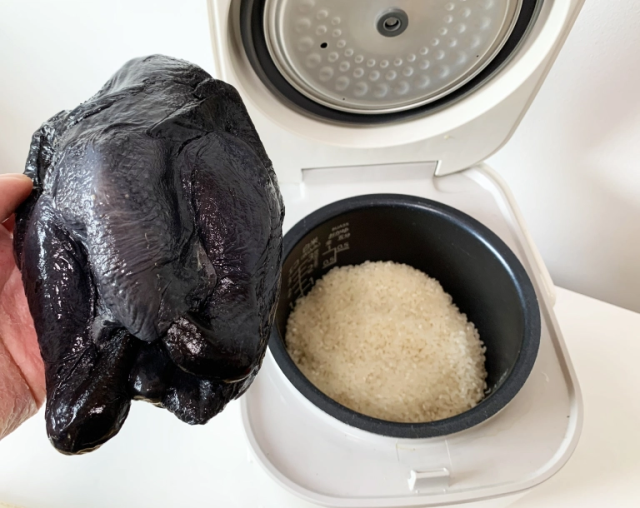
When the opportunity to recreate a mouthwatering manga meal comes up, we’re not going to turn it down.
Ameya Yokocho, a network of shopping streets near Ueno Station, is one of the most colorful places for bargain hunting in Tokyo, with shops offering all sorts of clothing and foodstuff at rock-bottom prices. But while Ameya Yokocho is on the up and up these days, back in the 1940s it was known as one of the city’s postwar black markets.
So really, it makes sense that Ameya Yokocho is where we bought a jet-black chicken.
Our Japanese-language reporter Seiji Nakazawa spotted this fearsome foul on a shopping run in Ameya Yokocho. At first he wasn’t sure what it was, but the dark mass in a store’s glass-fronted freezer beckoned to him. As he got closer, he could see that it was some sort of meat, but he couldn’t tell what creature it came from until he read the label and saw the characters 烏骨鶏.
Pronounced ukkokei in Japanese, the same characters are read as wu gu ji in Chinese and refer to the Silkie, also known as the Chinese silk chicken, a breed of chicken with unusually soft and fine feathers that look almost like fur. However, what really makes the Silkie unique is that the bird’s melanin is found deep beneath the skin’s surface, making its meat black or dark gray.
▼ The darkest chicken since convenience store Lawson’s Black Hole-flavored Karaage-kun
Seiji had never seen a Silkie in person, but he distinctly remembers that in competitive cooking anime/manga Chuka Ichiban the main character Mao cooks one to win a culinary tournament. Between that endorsement and the whole bird costing just 1,500 yen (US$14), Seiji decided to buy it and recreate the manga meal.
In the story, Mao stuffs the chicken with rice and seasonings, then stews it in rice wine. Because of the small size of his Silkie, though, Seiji instead decided to slice the chicken and cook it in his rice cooker along with the grains.
However, he ran into a problem almost immediately.
The most complicated meat prep work Seiji has ever done is tearing the plastic wrap off of a pack of chicken thighs from his local supermarket. His first instinct was to just grab a knife and start slicing the Silkie like it was a cake, but cakes don’t have bones.
Making poor progress, Seiji whipped out his phone and pulled up a couple “how to carve a chicken” videos on YouTube for reference. His bird had been frozen with its legs folded forward in order to take up less space in the freezer, though, so the video examples weren’t an exact match for what he was working with. Ultimately, he decided to cover for his lack of technique by applying extra brute strength, making cuts wherever he could force the knife to chop through.
▼ The intimidating color gave the talons a particularly menacing aura.
His inelegant methods probably dulled his kitchen knife’s edge, but eventually Seiji had cut the chicken into pieces small enough to fit in his rice cooker. In addition to the meat, rice, and necessary amount of water, he also added two tablespoons of sake.
In Seiji’s manga inspiration, Mao also stuffs the chicken with seasonings. Seiji had bought some green onions for that purpose, but by this point his rice cooker was already looking pretty full. Trusting that the sake and natural flavors of the unnatural-looking chicken would be enough, he closed the lid and hit the start button.
45 minutes later, the cooking process was done. Seiji cautiously opened up the lid…
…and was greeted by an inky darkness that reminded him of the Oreo rice we made a while back.
The rice hadn’t become completely recolored, but it was definitely a darker shade of gray from the almost-radiant white it normally would be.
Now time for the moment of truth, Seiji dished up, took a bite, and…
…was shocked by how ordinary it tasted.
Sure, it was nice-tasting chicken and all, but his prediction that eating such an ominous-looking fowl would give him a shockingly stimulating flavor, and perhaps also the power to raise an army of the dead through dark magic, turned out to be incorrect. If anything, the results were pretty plain on the palate, though after adding a dash of salt the dish suddenly started to really please his taste buds.
In retrospect, Seiji’s enthusiasm for animation might have overly boosted his expectations, and he also admits that things might have gone better had he followed Mao’s example more closely. Still, it’s not like it tasted bad, and if you’re looking for a way to give your cooking some unforgettable visual impact, this is about as impactful as you can get without using edible bamboo worms and crickets.
Images ©SoraNews24
● Want to hear about SoraNews24’s latest articles as soon as they’re published? Follow us on Facebook and Twitter!
[ Read in Japanese ]
Follow Casey on Twitter, where he highly recommends Chuka Ichiban’s Maki Oguro opening theme “Sora.”
[ Read in Japanese ]

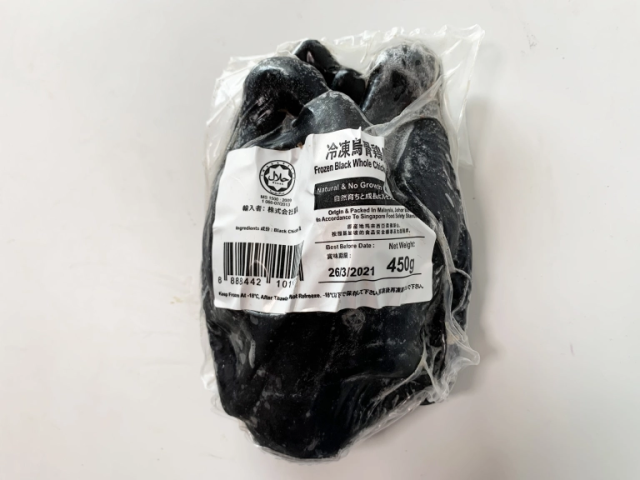
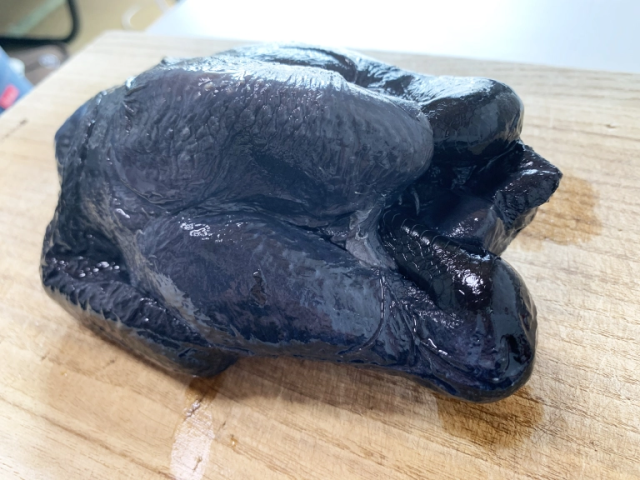
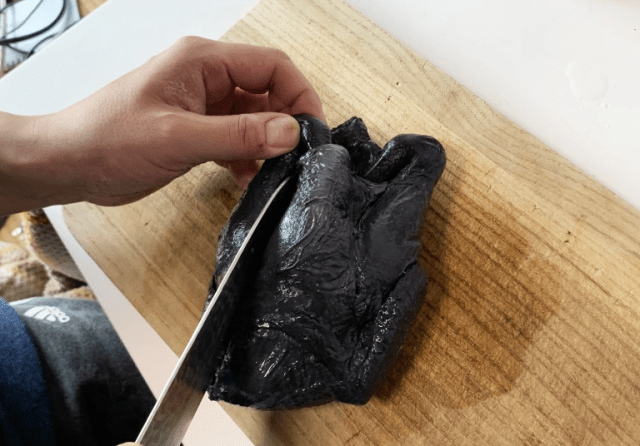
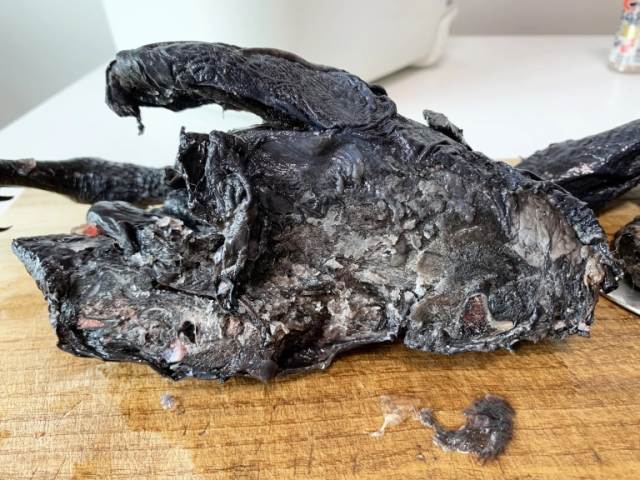
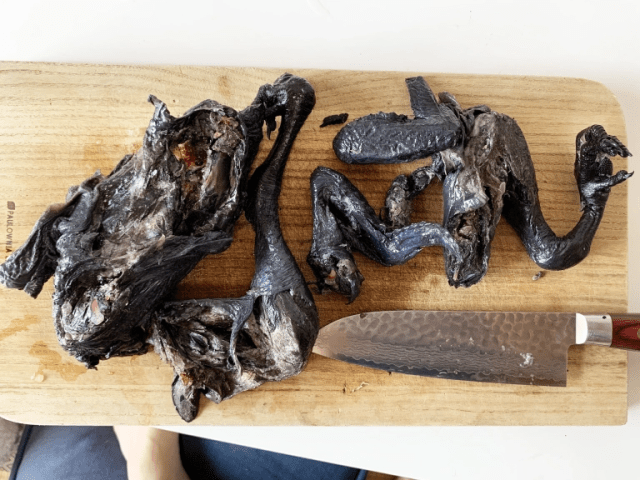
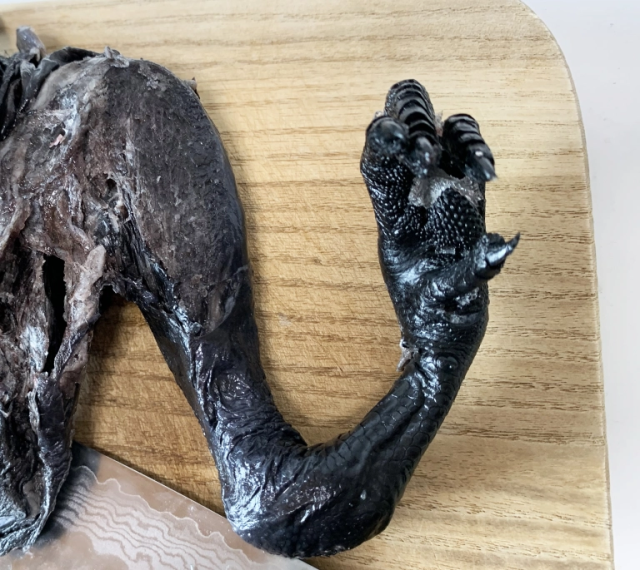
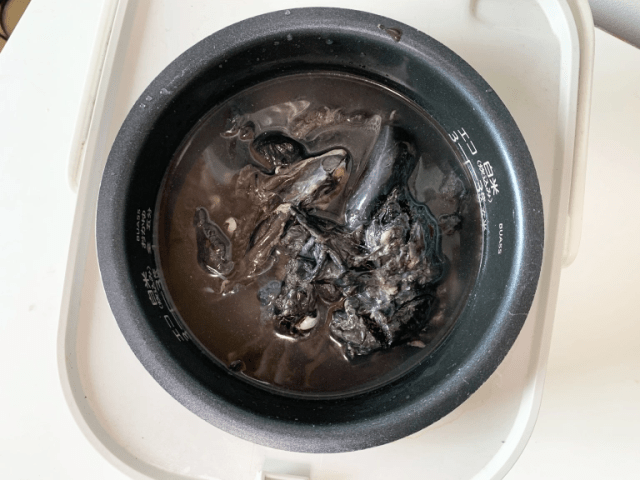
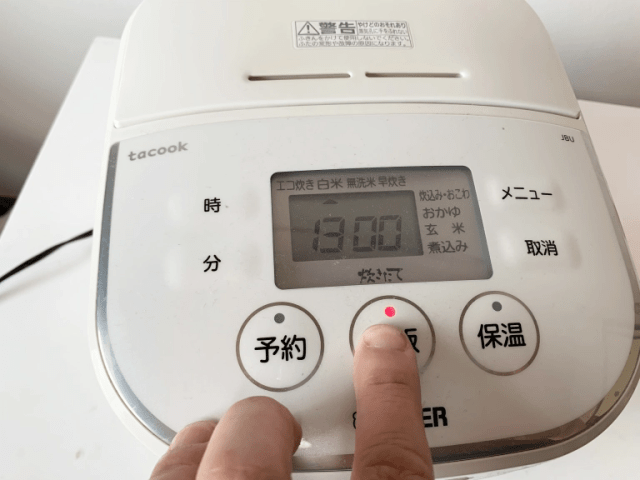
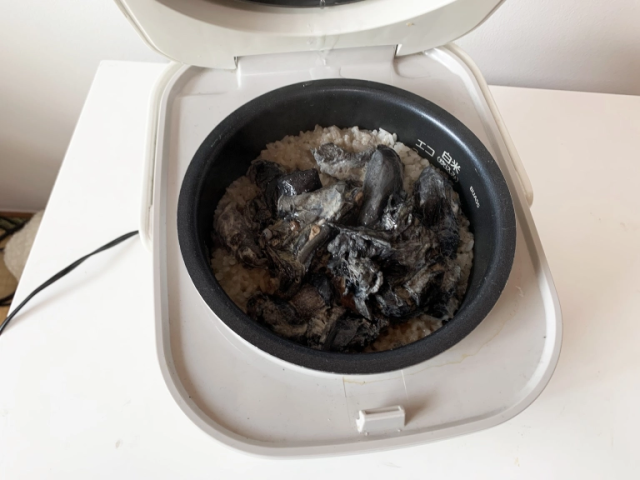


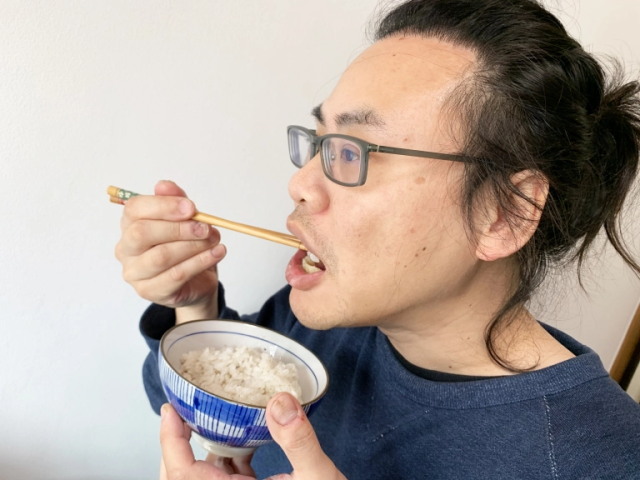

 What happens when you cook beer with potato chips in a rice cooker?
What happens when you cook beer with potato chips in a rice cooker? Unboxing the McDonald’s French Fry Snack Maker【Review】
Unboxing the McDonald’s French Fry Snack Maker【Review】 Hidden in plain sight, low-key sweets shop surviving in Tokyo’s street market is a tasty treasure
Hidden in plain sight, low-key sweets shop surviving in Tokyo’s street market is a tasty treasure The strange part of Japan where “grilled chicken” doesn’t always mean “chicken”
The strange part of Japan where “grilled chicken” doesn’t always mean “chicken” We cook a monjayaki Japanese pancake on the hood of a car during Japan’s hottest summer ever【Vid】
We cook a monjayaki Japanese pancake on the hood of a car during Japan’s hottest summer ever【Vid】 Japanese ramen restaurants under pressure from new yen banknotes
Japanese ramen restaurants under pressure from new yen banknotes New private rooms on Tokaido Shinkansen change the way we travel from Tokyo to Kyoto
New private rooms on Tokaido Shinkansen change the way we travel from Tokyo to Kyoto McDonald’s new Happy Meals offer up cute and practical Sanrio lifestyle goods
McDonald’s new Happy Meals offer up cute and practical Sanrio lifestyle goods We tried Korea’s way-too-big King Tonkatsu Burger at Lotteria 【Taste Test】
We tried Korea’s way-too-big King Tonkatsu Burger at Lotteria 【Taste Test】 French Fries Bread in Tokyo’s Shibuya becomes a hit on social media
French Fries Bread in Tokyo’s Shibuya becomes a hit on social media Studio Ghibli releases new action figures featuring Nausicaä of the Valley of the Wind characters
Studio Ghibli releases new action figures featuring Nausicaä of the Valley of the Wind characters Secret Kitchen bento serves Japanese flowers, birds, wind and moon in a box, but is it worth it?
Secret Kitchen bento serves Japanese flowers, birds, wind and moon in a box, but is it worth it? A trip to hell on Japan’s ‘vomit ship’: Is it as bad as everyone says it is?
A trip to hell on Japan’s ‘vomit ship’: Is it as bad as everyone says it is? Haku is…Chihiro’s dead brother? Studio Ghibli fans blown away by Spirited Away theory
Haku is…Chihiro’s dead brother? Studio Ghibli fans blown away by Spirited Away theory All-you-can-drink Starbucks and amazing views part of Tokyo’s new 170 meter-high sky lounge
All-you-can-drink Starbucks and amazing views part of Tokyo’s new 170 meter-high sky lounge More foreign tourists than ever before in history visited Japan last month
More foreign tourists than ever before in history visited Japan last month Starbucks reopens at Shibuya Scramble Crossing with new look and design concept
Starbucks reopens at Shibuya Scramble Crossing with new look and design concept Studio Ghibli glasses cases let anime characters keep an eye on your spectacles
Studio Ghibli glasses cases let anime characters keep an eye on your spectacles Is the new Shinkansen Train Desk ticket worth it?
Is the new Shinkansen Train Desk ticket worth it? Beautiful Ghibli sealing wax kits let you create accessories and elegant letter decorations【Pics】
Beautiful Ghibli sealing wax kits let you create accessories and elegant letter decorations【Pics】 Studio Ghibli releases Kiki’s Delivery Service chocolate cake pouches in Japan
Studio Ghibli releases Kiki’s Delivery Service chocolate cake pouches in Japan New definition of “Japanese whiskey” goes into effect to prevent fakes from fooling overseas buyers
New definition of “Japanese whiskey” goes into effect to prevent fakes from fooling overseas buyers Our Japanese reporter visits Costco in the U.S., finds super American and very Japanese things
Our Japanese reporter visits Costco in the U.S., finds super American and very Japanese things Studio Ghibli unveils Mother’s Day gift set that captures the love in My Neighbour Totoro
Studio Ghibli unveils Mother’s Day gift set that captures the love in My Neighbour Totoro Domino’s Japan now sells…pizza ears?
Domino’s Japan now sells…pizza ears? New Japanese KitKat flavour stars Sanrio characters, including Hello Kitty
New Japanese KitKat flavour stars Sanrio characters, including Hello Kitty New Pokémon cakes let you eat your way through Pikachu and all the Eevee evolutions
New Pokémon cakes let you eat your way through Pikachu and all the Eevee evolutions Sales of Japan’s most convenient train ticket/shopping payment cards suspended indefinitely
Sales of Japan’s most convenient train ticket/shopping payment cards suspended indefinitely Sold-out Studio Ghibli desktop humidifiers are back so Totoro can help you through the dry season
Sold-out Studio Ghibli desktop humidifiers are back so Totoro can help you through the dry season Japanese government to make first change to romanization spelling rules since the 1950s
Japanese government to make first change to romanization spelling rules since the 1950s Ghibli founders Toshio Suzuki and Hayao Miyazaki contribute to Japanese whisky Totoro label design
Ghibli founders Toshio Suzuki and Hayao Miyazaki contribute to Japanese whisky Totoro label design Doraemon found buried at sea as scene from 1993 anime becomes real life【Photos】
Doraemon found buried at sea as scene from 1993 anime becomes real life【Photos】 Tokyo’s most famous Starbucks is closed
Tokyo’s most famous Starbucks is closed One Piece characters’ nationalities revealed, but fans have mixed opinions
One Piece characters’ nationalities revealed, but fans have mixed opinions We asked a Uniqlo employee what four things we should buy and their suggestions didn’t disappoint
We asked a Uniqlo employee what four things we should buy and their suggestions didn’t disappoint Princesses, fruits, and blacksmiths: Study reveals the 30 most unusual family names in Japan
Princesses, fruits, and blacksmiths: Study reveals the 30 most unusual family names in Japan We encountered the most frightening fried chicken in Ameyokocho in Tokyo, and ate it anyway
We encountered the most frightening fried chicken in Ameyokocho in Tokyo, and ate it anyway How to eat a kebab without making a godawful mess – Advice from an Akihabara kebab merchant
How to eat a kebab without making a godawful mess – Advice from an Akihabara kebab merchant How to make a massive five-layer lasagna…in your rice cooker【SoraKitchen】
How to make a massive five-layer lasagna…in your rice cooker【SoraKitchen】 Does Tokyo’s King of Tonkatsu live up to its name? We find out 【Taste Test】
Does Tokyo’s King of Tonkatsu live up to its name? We find out 【Taste Test】 Japanese curry chain is highly recommended by foreigners on Reddit, but is it any good?
Japanese curry chain is highly recommended by foreigners on Reddit, but is it any good? Crazy expensive “phantom beef” instant curry — Dream come true or edible nightmare?【Taste test】
Crazy expensive “phantom beef” instant curry — Dream come true or edible nightmare?【Taste test】 We try Burger King Japan’s CooKING Burger @Home, use up lots of stuff in our fridge
We try Burger King Japan’s CooKING Burger @Home, use up lots of stuff in our fridge Demon Slayer teams up with beef bowl chain to excite fans, test their dexterity with Tanjiro bowl
Demon Slayer teams up with beef bowl chain to excite fans, test their dexterity with Tanjiro bowl A Gintama fan’s emotional 19-year journey to buy a proper Lake Toya bokuto wooden katana【Pics】
A Gintama fan’s emotional 19-year journey to buy a proper Lake Toya bokuto wooden katana【Pics】 This London ramen restaurant’s super-strange ramen shocks our Japanese taste-tester
This London ramen restaurant’s super-strange ramen shocks our Japanese taste-tester Is it okay to bleach hair that has been surgically transplanted? Seiji reports on his hairline
Is it okay to bleach hair that has been surgically transplanted? Seiji reports on his hairline Towering piles of sushi are waiting for you at this awesome Tokyo restaurant 【Photos】
Towering piles of sushi are waiting for you at this awesome Tokyo restaurant 【Photos】 Our Japanese reporter eats instant ramen from a bag for (almost) the first time in his life
Our Japanese reporter eats instant ramen from a bag for (almost) the first time in his life “Hey, Japanese taxi driver, take us to the best Sapporo ramen place!” – Things don’t go as planned
“Hey, Japanese taxi driver, take us to the best Sapporo ramen place!” – Things don’t go as planned How do you beat Bic Camera’s Lucky Box lines, and what’s inside their Sim-Free Phone box?
How do you beat Bic Camera’s Lucky Box lines, and what’s inside their Sim-Free Phone box? Why did this stand-and-eat soba noodle shop in Tokyo open in the middle of the pandemic?
Why did this stand-and-eat soba noodle shop in Tokyo open in the middle of the pandemic?
Leave a Reply